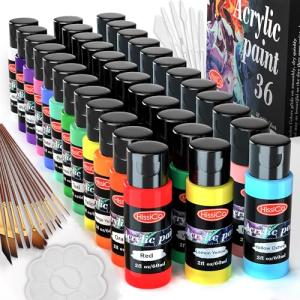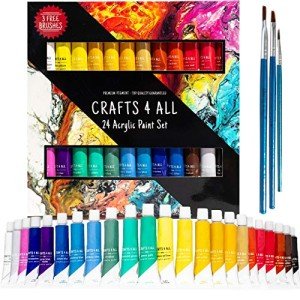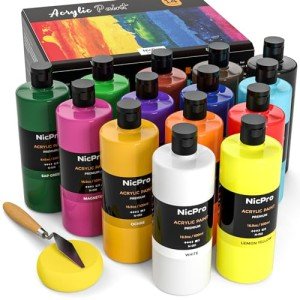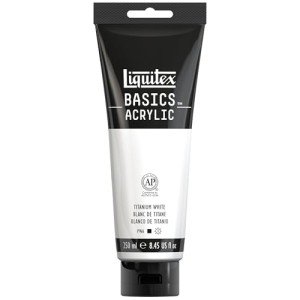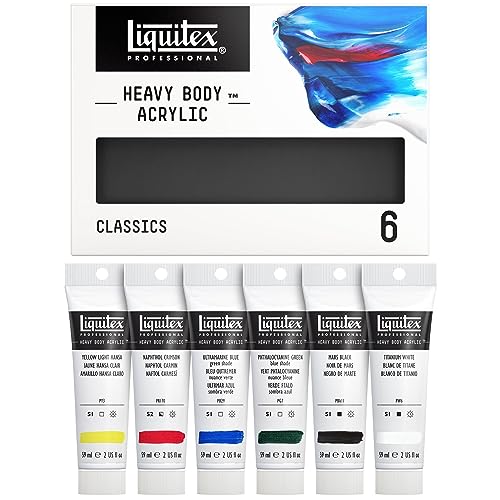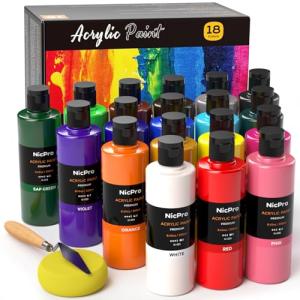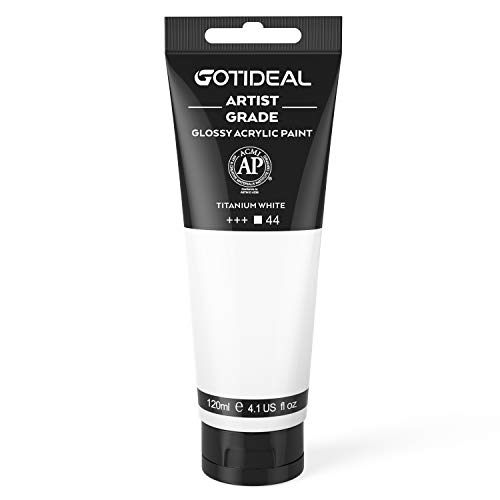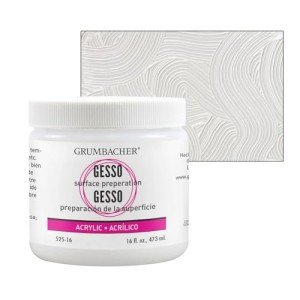Acrylic paints have emerged as one of the most popular and versatile mediums in the world of art. Loved by artists for their fast-drying properties, vibrant colors, and adaptability across various surfaces, acrylic paints have transformed the creative landscape. In this article, we will delve into the fascinating world of acrylic paints for art, exploring their history, characteristics, techniques, and the boundless artistic possibilities they offer.
A Brief History of Acrylic Paints
The development of acrylic paints as an artistic medium can be traced back to the mid-20th century when American chemical engineer Sam Golden and artists Leonard Bocour and Sam Krasner collaborated to create a stable, water-based acrylic paint. This marked the beginning of the acrylic revolution in the art world. Acrylic paints quickly gained popularity due to their versatility, fast drying time, and ability to mimic the properties of both oil and watercolor paints. Today, they are a favorite medium for artists of all levels.
Characteristics of Acrylic Paints
Acrylic paints are known for their distinctive characteristics, making them stand out among other painting mediums:
Fast Drying: Acrylic paints dry rapidly compared to oil paints, allowing artists to work quickly and layer colors within minutes. This fast drying time is advantageous for artists who want to complete their work in a shorter timeframe.
Versatility: Acrylic paints can be used on a wide range of surfaces, including canvas, paper, wood, fabric, metal, and more. Their adaptability makes them suitable for various artistic applications, from traditional painting to mixed media and even sculpture.
Vibrant Colors: Acrylic paints are available in a stunning array of colors, offering a wide spectrum of pigments that remain vibrant even after drying. Artists can mix, dilute, or layer acrylics to create an endless variety of hues and tones.
Water-Soluble: Acrylic paints are water-soluble when wet, allowing for easy clean-up and the possibility of creating watercolor-like washes and transparent glazes. When dry, they become water-resistant and permanent.
Texture and Consistency: Acrylic paints come in different viscosities, from thin and fluid to heavy-bodied. Artists can choose the consistency that suits their preferred style and application, whether it's for detailed work, impasto techniques, or creating texture.
Techniques and Creative Possibilities
Acrylic paints offer a multitude of techniques and creative possibilities for artists:
Layering and Glazing: Acrylics can be layered to create depth and build up colors. Transparent glazes can be applied over dry layers to achieve luminous effects and subtle transitions.
Impasto: Artists can use acrylics to create thick, textured surfaces by applying paint with a palette knife or other tools. Impasto techniques add depth and tactile qualities to artwork.
Blending: Acrylics can be blended wet-in-wet to achieve smooth transitions, gradients, and soft edges. Blending can be done with brushes, sponges, or even fingers.
Dry Brushing: Dry brushing involves using a nearly dry brush to apply paint, creating fine, delicate strokes and adding highlights or texture.
Mixed Media: Acrylics work seamlessly with other mediums, allowing artists to incorporate collage, ink, pastels, and more into their acrylic paintings for added depth and complexity.
Acrylic paints have revolutionized the art world with their versatility, vibrancy, and adaptability. Whether you are an experienced artist or a beginner embarking on your artistic journey, acrylics provide a medium that encourages exploration, experimentation, and creativity. Their fast-drying nature, wide range of colors, and compatibility with various surfaces and techniques make them an invaluable tool for artists across the globe.
As you pick up your acrylic paints, remember that you are holding a medium that bridges the gap between tradition and innovation, offering you the means to express your unique vision and capture the essence of your artistic inspiration. Acrylic paints empower artists to push the boundaries of creativity, resulting in works that are vibrant, expressive, and reflective of the boundless potential of the acrylic medium.
